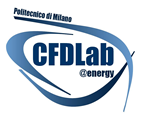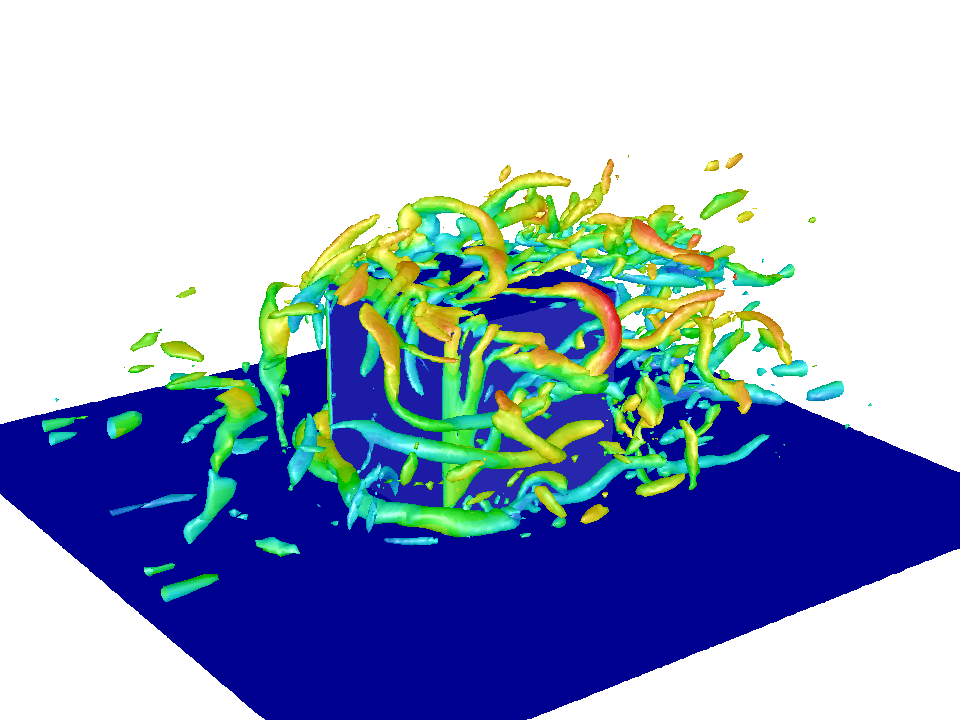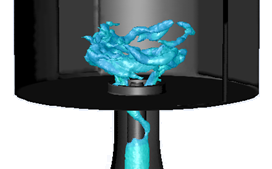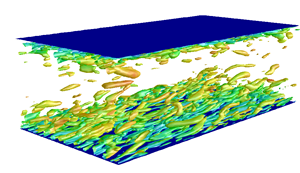Large Eddy Simulation (LES) is a theoretical/numerical approach for the numerical resolution of turbulent flows. In a broad sense, LES deals with approximations of the dynamic system based on the Navier-Stokes equations (NSE), the approximation being in the use of a lower number of degrees of freedom (i.e., the number of grid cells and time steps used in a computation) than those strictly required for a correct full numerical simulation of the flow (i.e., a DNS).
In LES literature, the reduction in the number of degrees of freedom is usually introduced by formally appliyng a spatial low-pass convolution filter to the NSE, an approach which dates back to Leonard (1974). Formally, the filter is aimed at separating the large turbulent scales, which in LES are directly simulated, from the small or subgrid scales, which in LES are modeled (i.e., by a SGS model).
The rational basis for this approach (and for LES, as a matter of fact) stems from the classical Kolmogorov picture of the turbulence energy cascade: large scales are the most energetic, anisotropic and the most dependent from the boundary conditions; small scales are less energetic, more isotropic and universal (similar among different turbulent flows), hence they should be relatively easy to be modeled (with respect to, say, RANS).
However, nowadays, it is fully recognized that the actual system effectively represented by the numerical simulation is different from the formally filtered NSE in several aspects. These range from the effective scale separation operator adopted (which in most cases is strongly influenced by the computational grid, the numerical schemes and, possibly, the SGS model too) to the specific form of the equations used for the simulation (which usually does not take into account some of the terms arising from the filtering operation, e.g., the commutation error). These aspects are even more critical when considered in the framework of unstructured CFD solvers.
Additional difficulties in LES also arise from the proper specification of boundary conditions, especially at inflow and wall boundaries of the simulated domain. In the former case, due to the high number of scales resolved, the required information goes well beyond the typical RANS specification of mean flow features and some approximations are required. In the latter case, due to the near wall turbulence features, a proper LES approach near the walls is not really achievable (as the most energetic scales are also the smallest) and modeling is required to avoid near DNS resolutions.
Due to the large resolution requirements, LES is now a feasible approach only for small-medium sized industrial applications where unsteady computations are unavoidable.
The activities of the group regard several aspects of the LES approach:
1) Investigation on the effect of numerical parameters for LES on unstructured finite volume codes
As members of LESinItaly (http://cfd.caspur.it), a team of Italian research groups whose activities are mainly focused on LES, we investigate the use of the LES module in the commercial CFD solver Fluent 12.1, mainly in relation with the numerical parameters (computational grid, convective scheme, time step restrictions, etc.).
2) Dynamic and static SGS model development, validation and implementation in unstructured finite volume codes
Some of our Ph.D. and Master thesis also involve the development and/or validation of new SGS models with respect to established experimetal databases (i.e., ERCOFTAC) and/or specific applications for which dedicated experimental campaigns are conducted by the group and our collegues.
3) LES for industrial applications (conjugate heat transfer, confined swirling flows)




